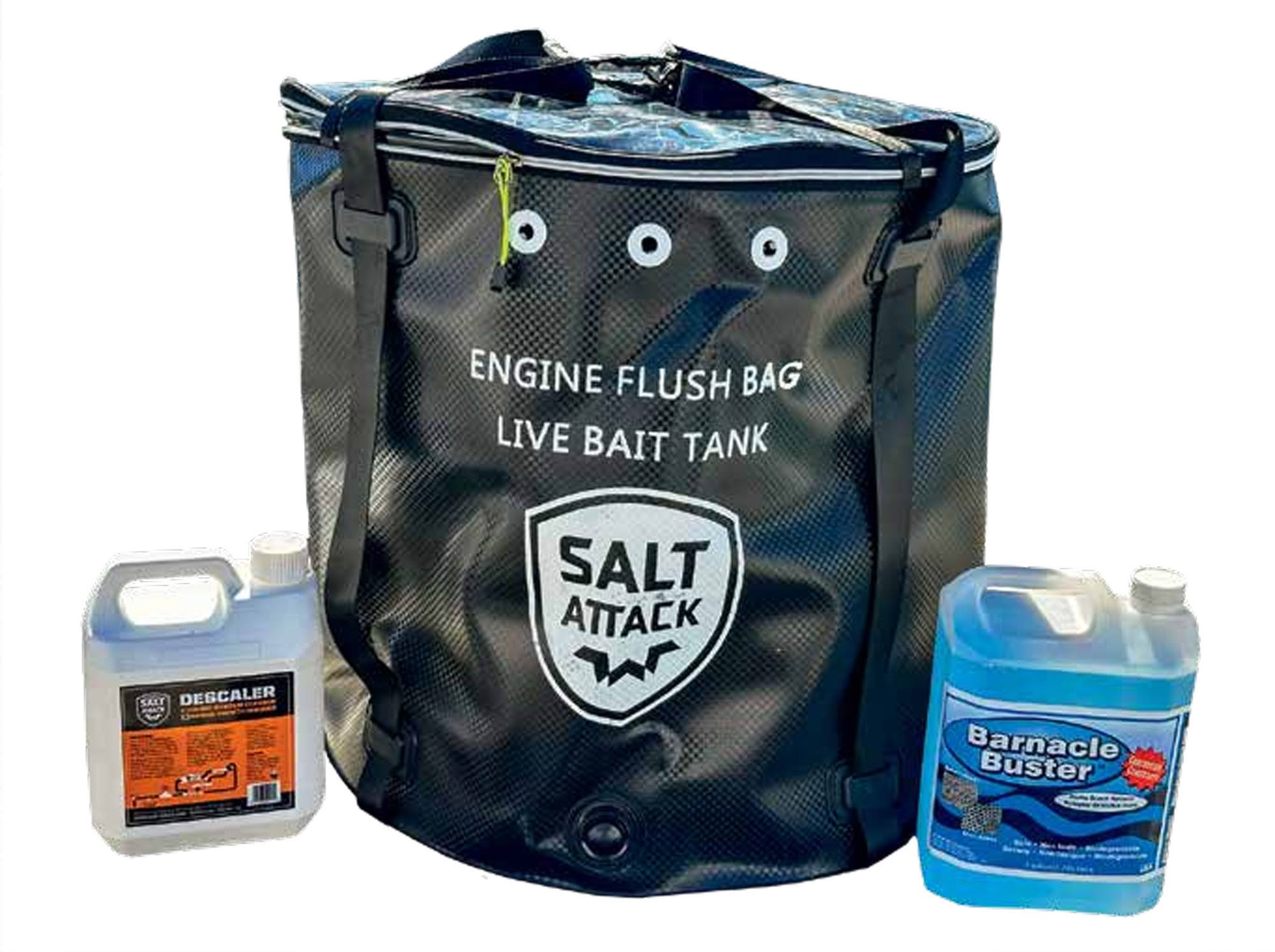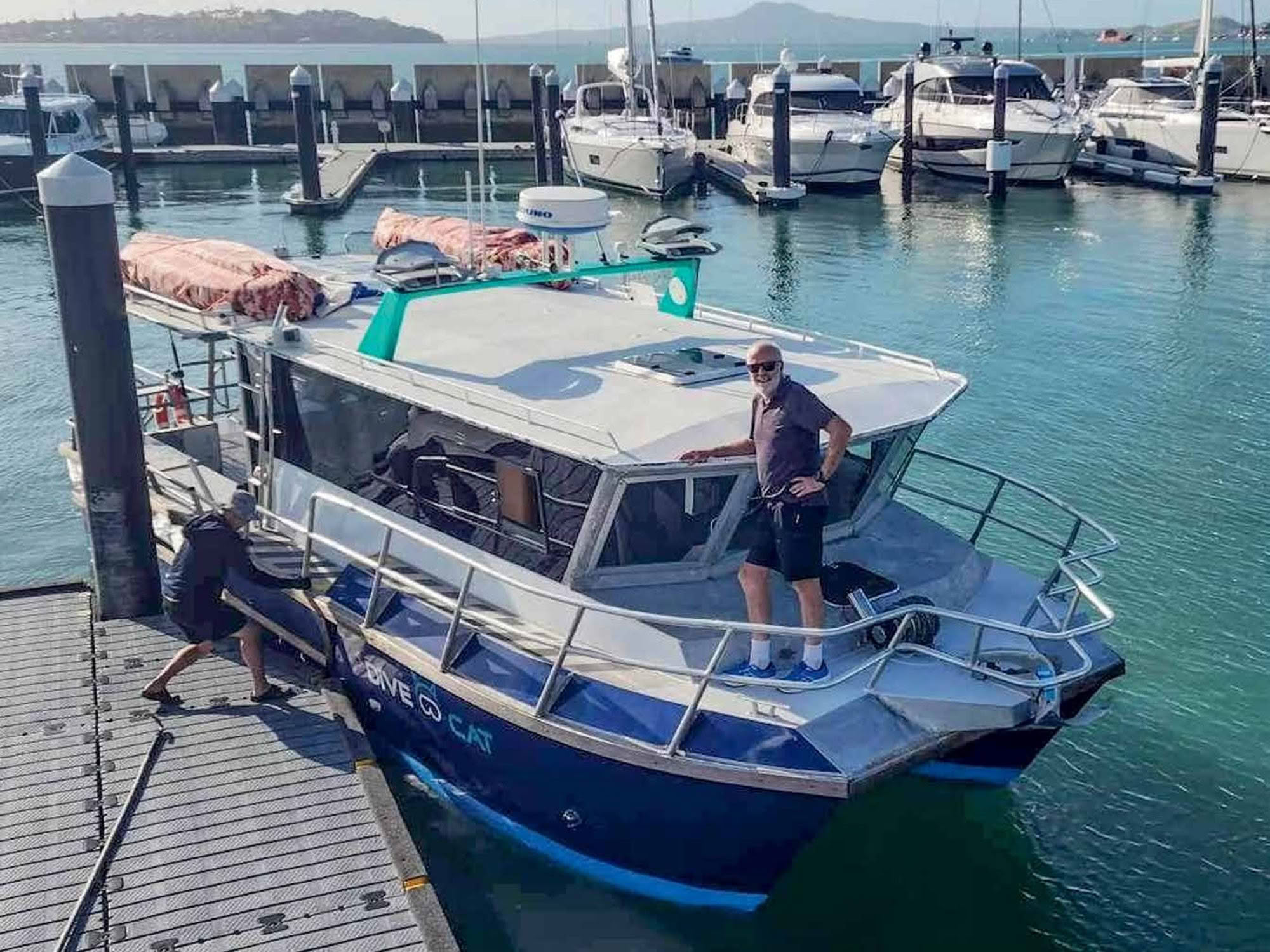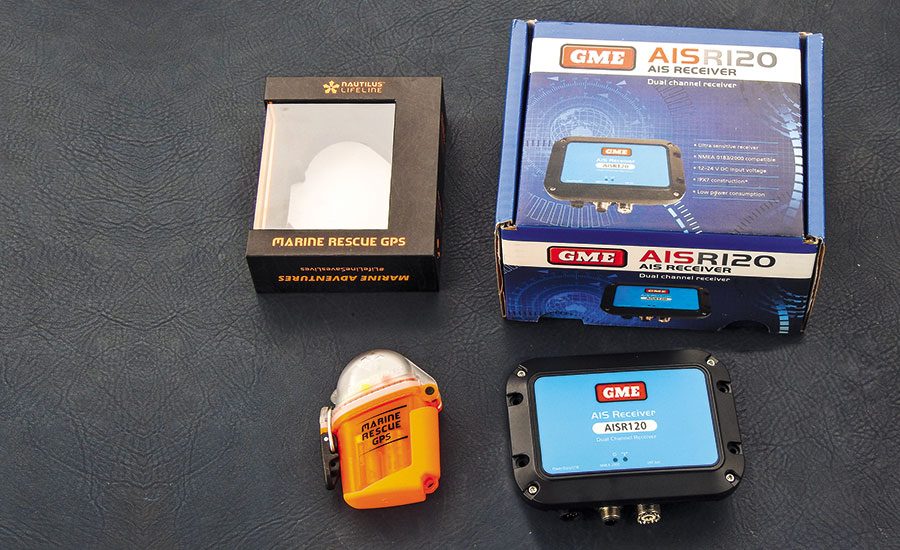

Retrofitting an AIS (Automatic Identification System) to your boat is relatively inexpensive and easy, and it might make a significant difference in a rescue situation.
Trampers heading out into the back country usually carry a personal locator beacon (PLB). An EPIRB (Emergency Position Indicator Radio Beacon) uses the same technology and no boatie should head out without one. In both cases, activating the beacon transmits a distress signal – together with its precise GPS co- ordinates – to an overhead satellite network.
There are even compact waterproof locator beacons for kayakers and swimmers, and with a suitable housing some PLBs can also be taken underwater by scuba divers. The locator beacon technology is reliable, compact and very precise. Unfortunately, the strong point of the technology is also its greatest weakness – it’s based on a satellite signal.
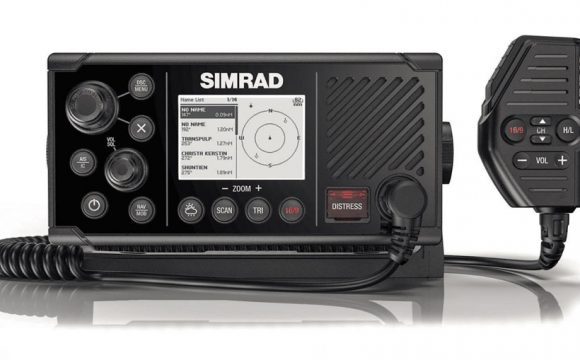 The Simrad RS40 VHF with Class B AIS was our alternative option.
The Simrad RS40 VHF with Class B AIS was our alternative option.
This means beacons can be used in remote locations with zero radio or mobile phone signal. But it also means the alert has to be passed through the global satellite response system, and then routed to the National Rescue Co-ordination Centre. The centre then decides which local agency (Police, Coastguard, Mountain Rescue, etc) is best placed to deal with the issue, and an appropriate search and rescue operation is initiated.
Apart from the slight delay, the main issue with this for boaties is that other nearby vessels will be completely unaware there is someone in trouble until Coastguard puts out a VHF call. Usually, the best source of help is the closest boat. By the time a Coastguard vessel arrives it may be too late.
A secondary issue is that an EPIRB or PLB is strictly for emergency use. It initiates a full SOS alert which cannot be cancelled by the initiator. Once the process starts there is a formal protocol to be followed even if the beacon is turned off, and there are potential repercussions for false alarms.
There is no way to use this system as a simple ‘Hey, come fetch me’ type signal, which may be all that is required. We faced this situation a few weeks ago while scuba diving in the Hauraki Gulf.
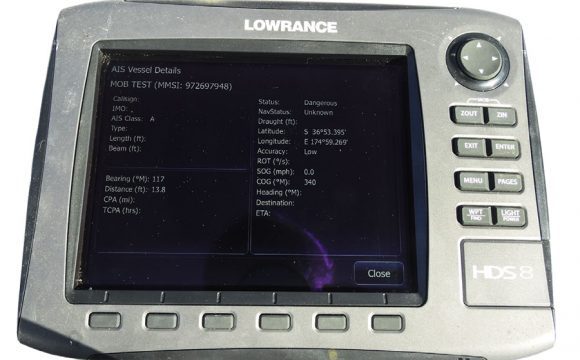 Selecting the symbol on the details of the target, including bearing and distance.
Selecting the symbol on the details of the target, including bearing and distance.
With the moderate current one of the divers had drifted a fair way from the boat before surfacing. He could see the boat but those on board couldn’t see him, and he was too far away for them to hear him shout or whistle. The angle of the sun also made it difficult to see his surface marker buoy.
This caused a major panic on board with a full callout to Coastguard resulting in a local rescue boat being dispatched, its fixed-wing aircraft taking off and even the police helicopter being redirected our way.
In fact, this was unnecessary in the end because a nearby boatie joined the search and shortly afterwards found our missing diver bobbing safe and sound on the surface some way from us.
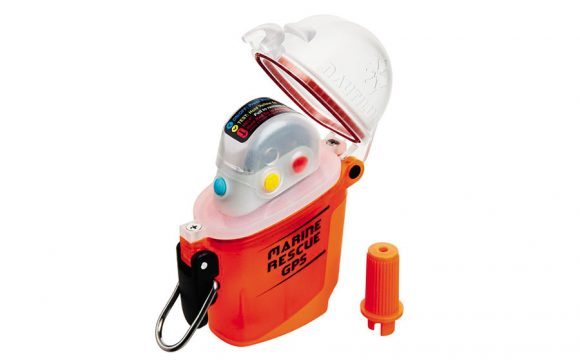 The Nautilus Lifeline Marine Rescue beacon.
The Nautilus Lifeline Marine Rescue beacon.
The only issue was he had run out of ways to try and attract our attention. In this case a PLB would certainly have initiated the same rescue scenario, but what he really needed was a simple way to tell those on the boat where he was.
Which is where AIS comes in.
The marine Automatic Identification System is carried by all commercial shipping, and you can track the position of any vessel in real-time at www.marinetraffic.com. On that website you can zoom in to your region of New Zealand and see ferries, container ships and other commercial vessels moving around. The data is updated every few minutes and clicking on any of the targets gives you more information about the vessel.
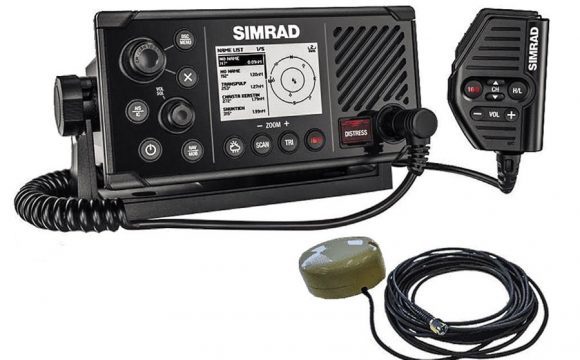 Simrad’s RS40 VHF comes with an integrated AIS receiver.
Simrad’s RS40 VHF comes with an integrated AIS receiver.
AIS has two flavours: class A and class B. It is the class B version of AIS, which operates over the VHF radio frequencies, that is useful for inshore waters. Firstly, an AIS receiver can be installed in recreational boats at a very modest cost. Secondly, it need not be a full emergency – an AIS-based locator beacon has two modes, one of which simply transmits the beacon’s current location. The second mode appends a distress signal to the location and is used for an emergency situation.
So, in our case when our diver popped to the surface and was unable to get our attention, he could have simply activated the ‘location’ signal on his AIS personal beacon. This would immediately display his position on the boat’s chartplotter, and we would know exactly where he was.
If we had pre-programmed the ID of his locator into the unit it would even show us his name rather than just the generic ID. The beauty of this system is that his location would show on any boat in the area with AIS capability, either on their chartplotter or VHF radio.
With this experience fresh in mind, we set about implementing an AIS solution.
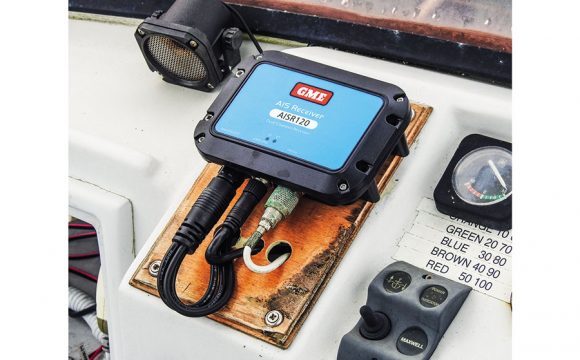 The finished installation. Just need to seal the cable holes. Pretty straightforward.
The finished installation. Just need to seal the cable holes. Pretty straightforward.
First on the agenda was to source appropriate locator beacons for the divers. There are two solutions readily available in NZ – the Nautilus Lifeline and the McMurdo Smartfind S10. Both are compact, waterproof to well beyond maximum recreational diving depths, and have a five-year battery life.
The Nautilus is more compact and slightly cheaper, while the Smartfind is perhaps slightly easier to activate and also incorporates a flashing indicator light for night- time use. Needing a couple of these units, cost was our deciding factor – we purchased the Nautilus units through our local dive shop, but they are also available online from local distributors Seatech.co.nz.
Next, we needed an AIS receiver on the boat. We could have gone for the best solution and installed a full AIS transponder, which is then integrated to our chartplotter. A transponder transmits a signal to tell other vessels where we are and also receives signals from other AIS units. We have previously reviewed AIS systems from local manufacturer Vesper Marine, and this would be the ideal solution.
But this was overkill for our specific requirements and also exceeded the available budget. Instead, we looked for a lower-cost solution – a receiver-only option. The AISR120 receiver (manufactured by Australia’s GME), is available from all marine chandlers and even a few auto spares shops. At around $350, it’s a relatively modest outlay, although it also needs a dedicated VHF antenna (or an aerial splitter to share your VHF’s existing antenna).
 The red, circular icon indicates the beacon’s location.
The red, circular icon indicates the beacon’s location.
The unit has a built-in GPS antenna, though you can connect it to a suitable external GPS antenna if your installation location does not have a clear view of the sky. It has a NMEA- 2000 port and also a NMEA0183 output for older chartplotters, as well as an optional USB interface for connecting to a laptop computer.
Another solution we considered was upgrading our existing VHF to something like Simrad’s RS40 VHF radio with integrated AIS receiver. At just under $800 this would be the easiest in terms of installation – it simply replaces your existing VHF and plugs into the same antenna.
An optional NMEA-2000 cable then connects this unit to your chartplotter, and it has the added advantage that you will get the AIS signals on your VHF radio screen even if the chartplotter is turned off. The unit also works as a stand-alone AIS receiver if you do not have a compatible chartplotter. But in keeping with the minimum costs objective, we opted for the GME.
The AISR120 unit was a simple install. We considered the wide dash area inside the main cabin, but as the unit has an IPX7 waterproof rating we instead fitted it up on the flybridge. This gave the unit a clear GPS signal, and both 12V power and NMEA-2000 connections were close by.
Connecting the VHF antenna was the only complicated part, since an AIS-compatible VHF splitter is not the same as the usual VHF/FM splitter used to run the stereo off the same antenna as the VHF.
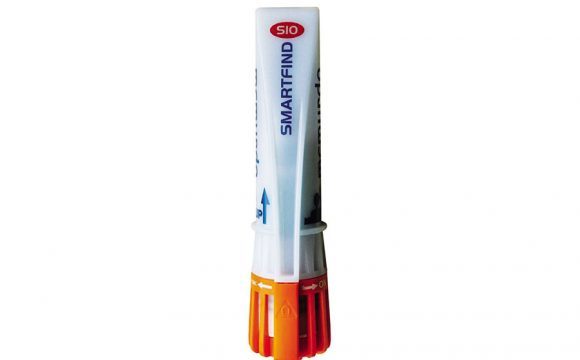 The Smartfind S10 was another option for the diver’s beacon.
The Smartfind S10 was another option for the diver’s beacon.
Signal loss will occur unless you implement an active splitter, which is an additional cost. Luckily our boat had two standard VHF antennae already installed, one of which was redundant and could be repurposed. Total installation took less than 30 minutes.
Configuring the system couldn’t be easier. Our Lowrance chartplotter simply recognised the AIS receiver, and we immediately began receiving AIS signals from nearby commercial vessels. Testing the Nautilus involved turning it on and pressing the test mode button, and within 45 seconds it had obtained a GPS fix and transmitted its position.
Our chartplotter instantly showed the location and beeped a warning and continued to display the beacon’s location even when we took it some distance from the boat. Selecting the target icon gave us more details, including the bearing from us to the target and its distance away.
We were able to customise the icon, and give the AIS device a user-friendly name, but have not bothered. Note the AIS beacon will default to a different icon from commercial shipping, so it’s easy to identify even if there are other vessels around.
Job done, and now we just need to make sure divers pop a beacon in their BCD pocket before heading overboard. BNZ


